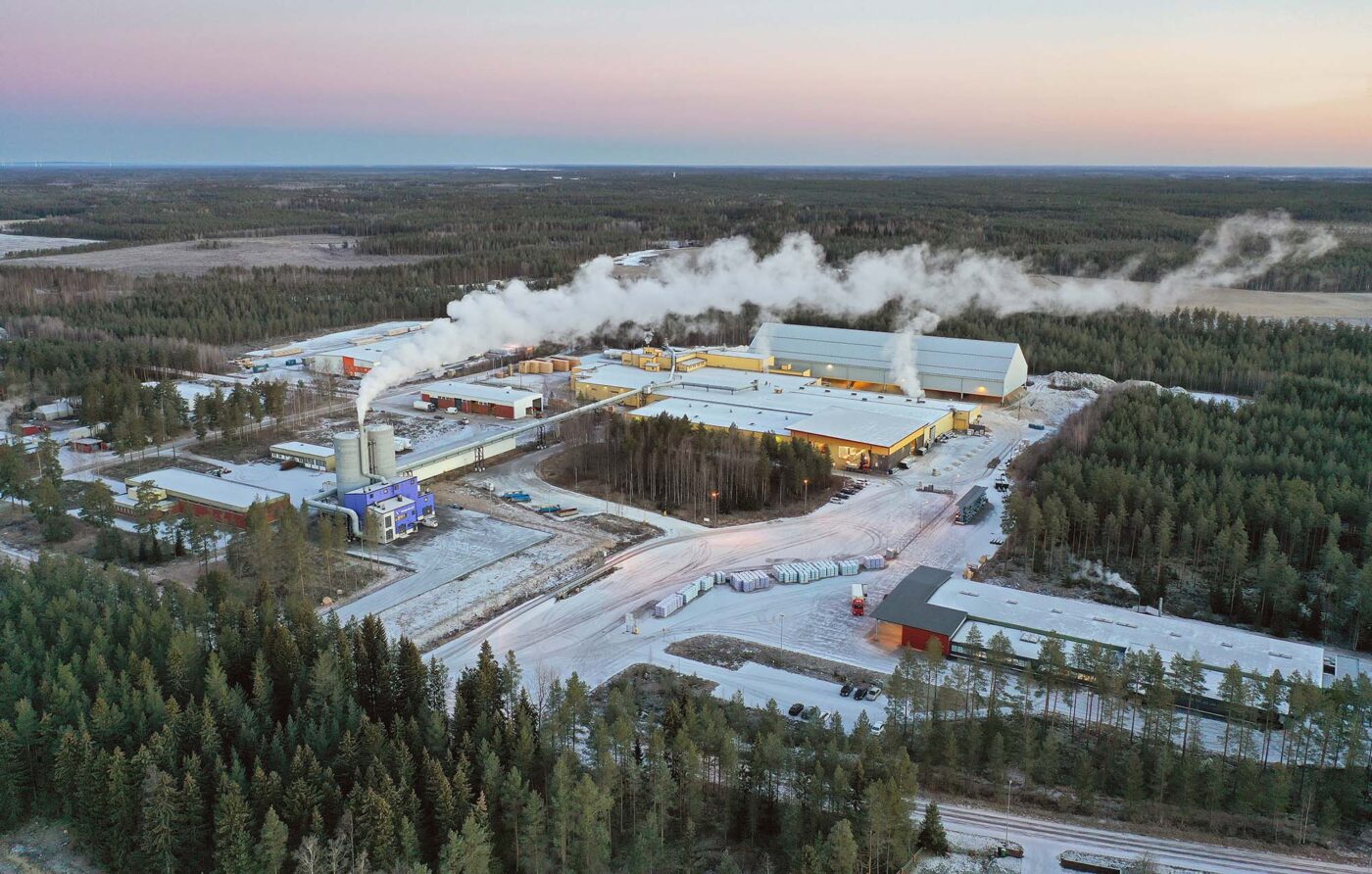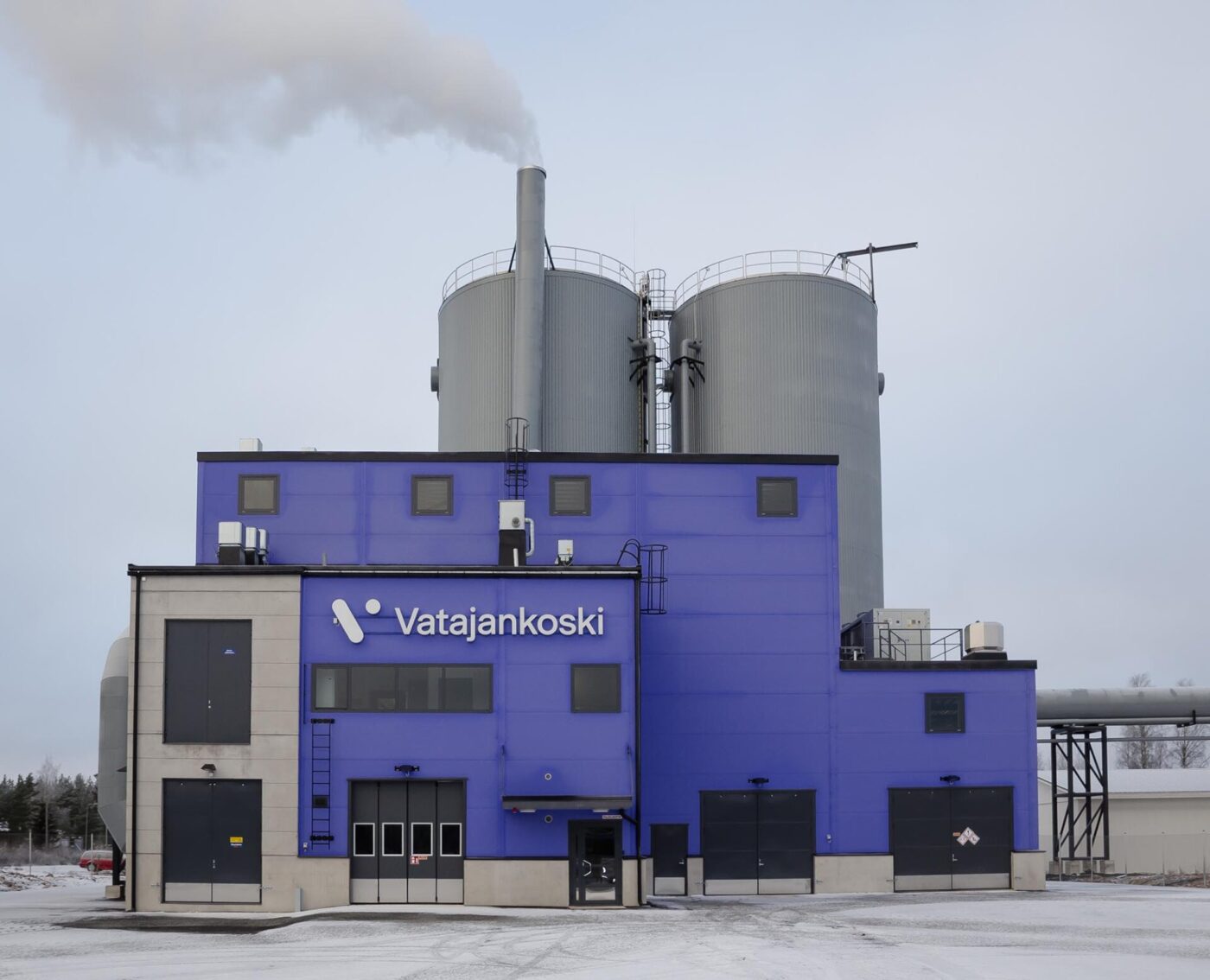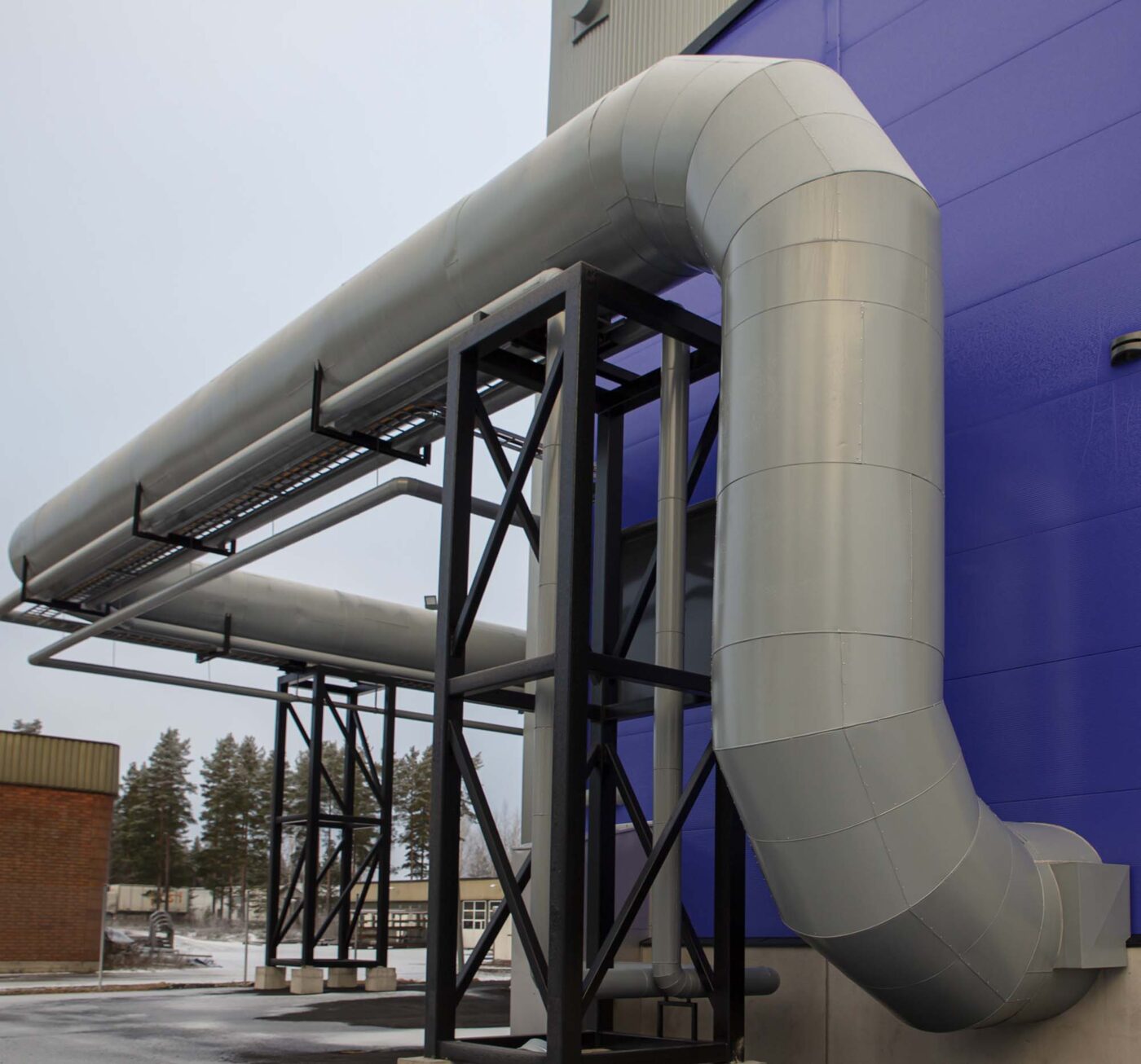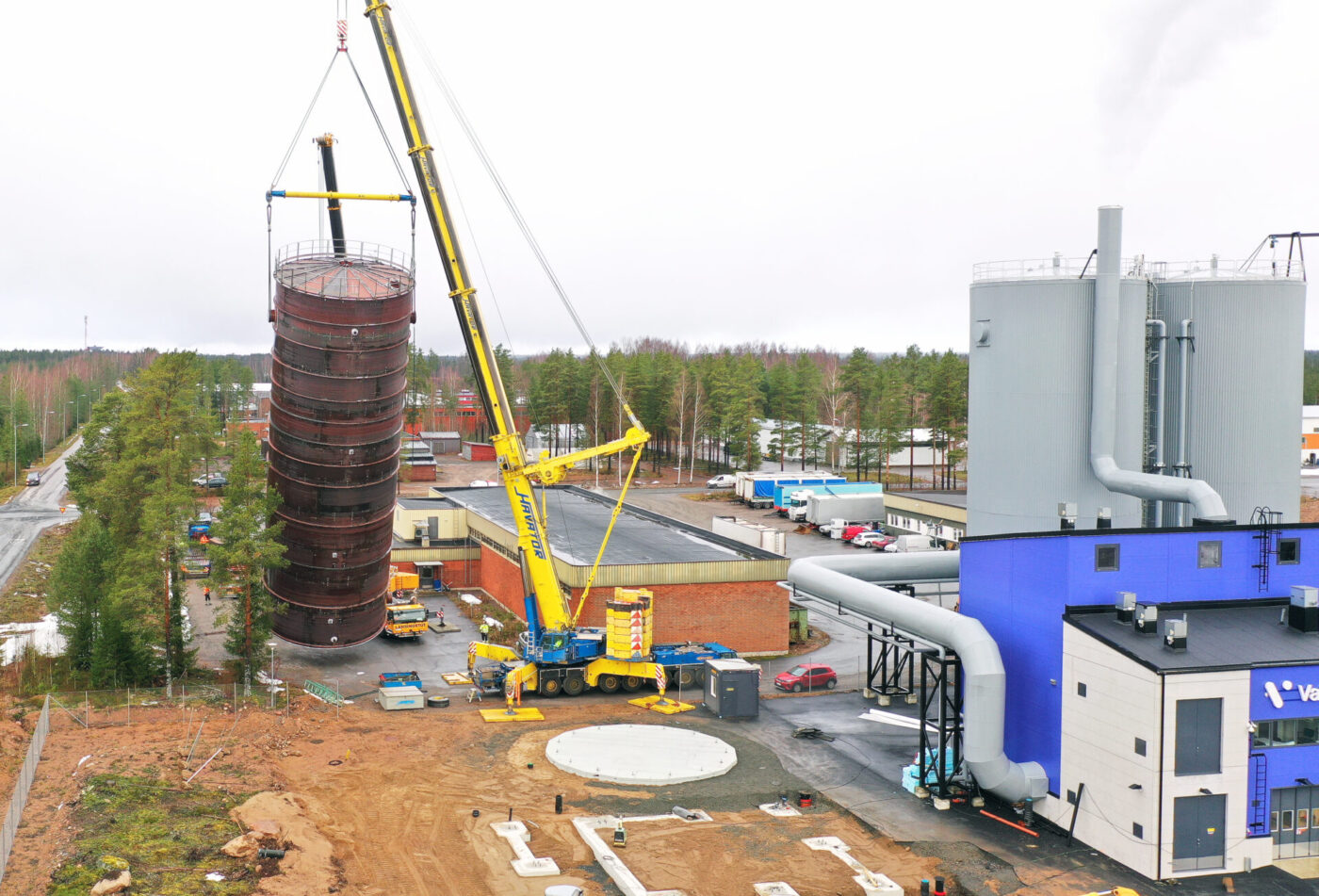Waste Heat Factory
Using waste heat in district heating
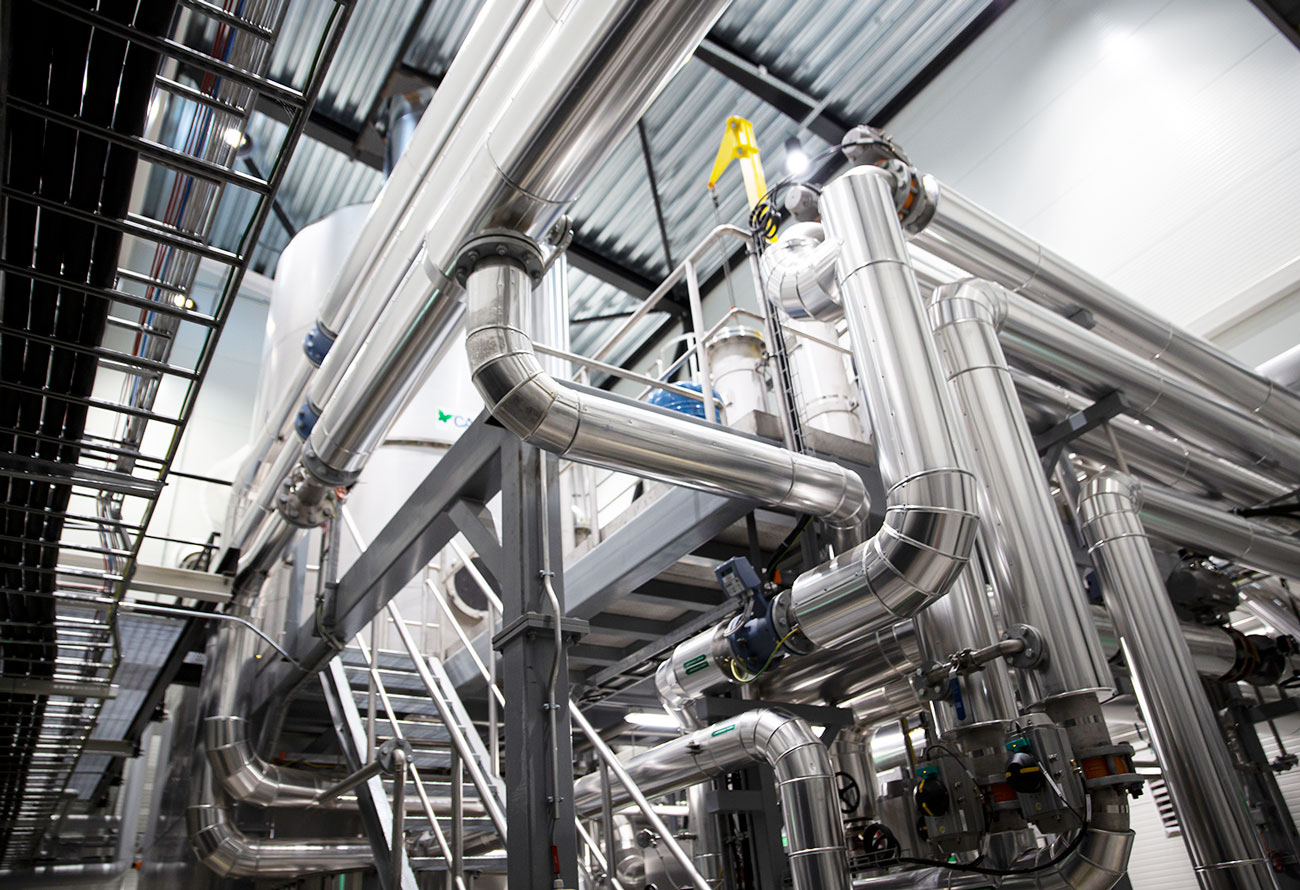
01 – What is it
Industrial processes often generate waste energy that remains unused. The recovery of waste heat reduces CO2 emissions and can at best cover a significant part of the district heat needs of the entire area and the factory itself. Vatajankoski harnessed the water vapor generated in the production process of Knauf’s plasterboard factory into use.
Pansia’s waste heat plant supplies renewable heat to Kankaanpää’s district heating network, replacing heat production based on combustion. Vatajankoski’s waste heat power plant received the Energiatehokas (Energy Genius) of the Year 2021 recognition for its responsibility work from the Finnish Ministry of Economic Affairs and Employment, The Energy Authority and Motiva. The department promotes the EU’s key goals related to energy efficiency, circular economy and renewable energy production.
02 – How it works
The amount of water vapor created in the processes of the plasterboard factory, which was previously released into the sky, is now directed along the duct system to the power plant, where heat pumps raise the heat to a high enough temperature for the district heating network. The need for district heating in the center of Kankaanpää is covered five months of the year with waste heat.
The combination of technical solutions based on wet scrubber technology, heat pumps and temporary heat storage is the first of its kind in Finland. Wet scrubber technology has not previously been applied to produce district heating without an additional heat source. In Vatajankoski’s innovation, there is no need for external energy or a separate burner, because the heat pumps are sufficient enough.
03 – How it can be used
The waste heat power plant guarantees the competitiveness and price stability of district heating. All fuels are associated with significant price, tax and availability risks, and the larger part of district heat is produced emission-free without burning, the more stable the production of district heat will be in the long term.
Most of the water vapor from the Knauf factory is condensed back into water, which is intended to be used as process water for the plasterboard factory. Using steam also saves groundwater. In addition to the environment, people benefit from the Vatajankoski project. The vitality of the region is getting stronger and district heating will continue to be the most affordable heating solution in the region.
Tech Specs
- Pansia’s waste heat power plant recovers both waste steam and water
- The recovered waste heat is fed into the water of the district heating network
- The waste heat power plant uses wet scrubber technology without an additional heat source
- 2 heat pumps = approx. 6 MW
- 2 water tanks = 3000 m3 store energy approx. 200 MWh
- 100% renewable district heating, covers 1/3 of the area’s annual district heating needs
- More than 30,000 cubic meters of water are compressed from the waste steam, and the recovered water is recycled into the factory’s process water
